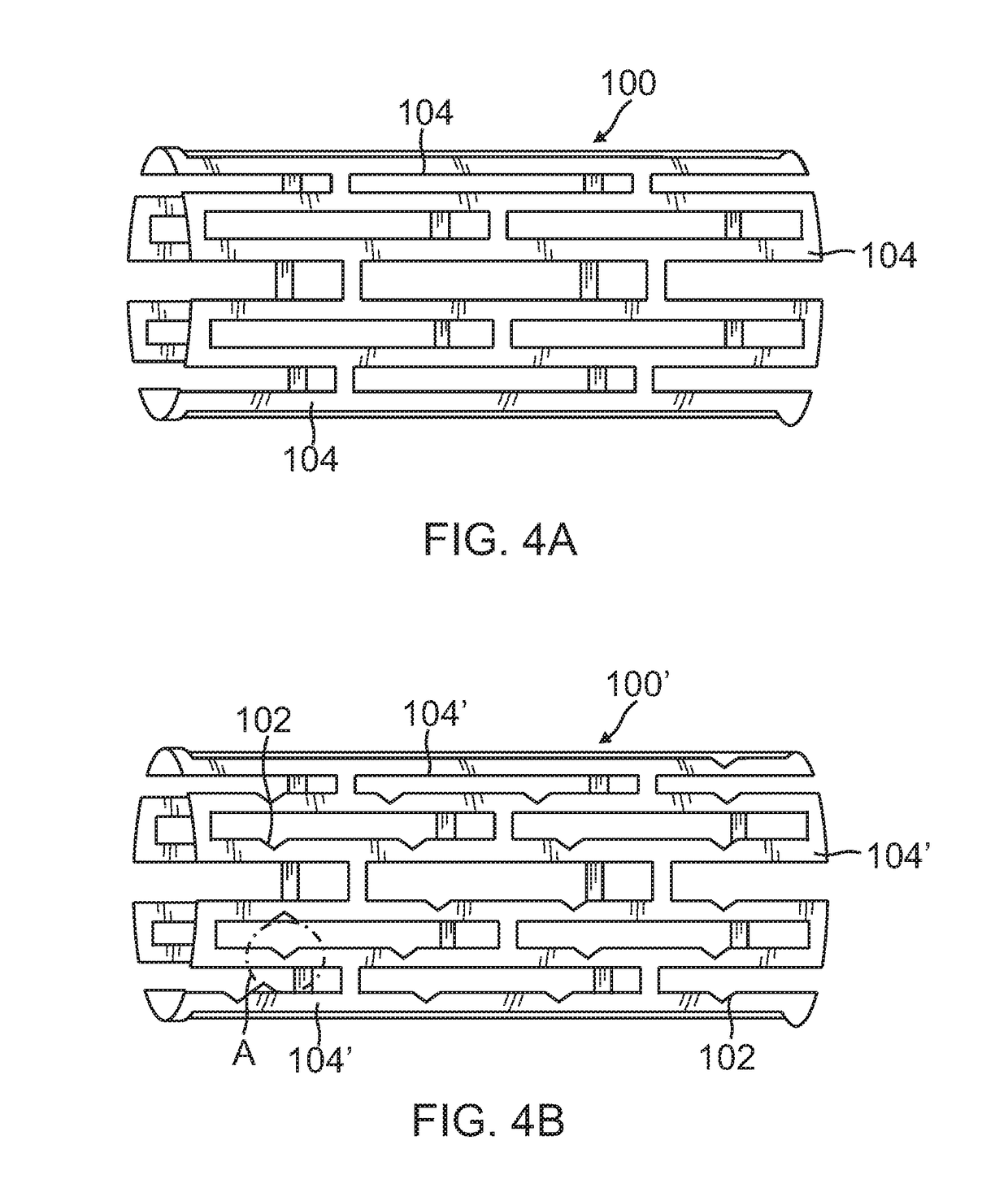System and method for renal neuromodulation by adjustable oversized stent
a technology of oversized stents and adjustable stents, which is applied in the field of system and method of renal neuromodulation by adjustable oversized stents, can solve the problems of increased blood vessel constriction, fluid retention, abnormal hormone secretions, etc., and achieve the effect of reducing or terminating the outward expansion for
- Summary
- Abstract
- Description
- Claims
- Application Information
AI Technical Summary
Benefits of technology
Problems solved by technology
Method used
Image
Examples
Embodiment Construction
[0040]In conjunction with the figures, preferred embodiments having features of the invention are described. In one embodiment, the invention is a system and method for producing controlled damage to nerves surrounding a vessel which may be a vein or artery. As explained above, such damage, where appropriately carried out to the renal nerves, is configured to have an impact that imparts therapeutic effects to the body of a patient that outweigh the effects of the damage to the nerve itself.
[0041]With reference to FIG. 1, the human renal anatomy includes kidneys 10 that are supplied with oxygenated blood by renal arteries 12, which are connected to the heart by the abdominal aorta 14. Deoxygenated blood flows from the kidneys to the heart via renal veins 16 and the inferior vena cava 18.
[0042]FIG. 2 illustrates a sectional view through a renal artery. More specifically, the renal anatomy also includes renal nerves 20 extending longitudinally along the lengthwise dimension of renal ar...
PUM
 Login to View More
Login to View More Abstract
Description
Claims
Application Information
 Login to View More
Login to View More - R&D
- Intellectual Property
- Life Sciences
- Materials
- Tech Scout
- Unparalleled Data Quality
- Higher Quality Content
- 60% Fewer Hallucinations
Browse by: Latest US Patents, China's latest patents, Technical Efficacy Thesaurus, Application Domain, Technology Topic, Popular Technical Reports.
© 2025 PatSnap. All rights reserved.Legal|Privacy policy|Modern Slavery Act Transparency Statement|Sitemap|About US| Contact US: help@patsnap.com



